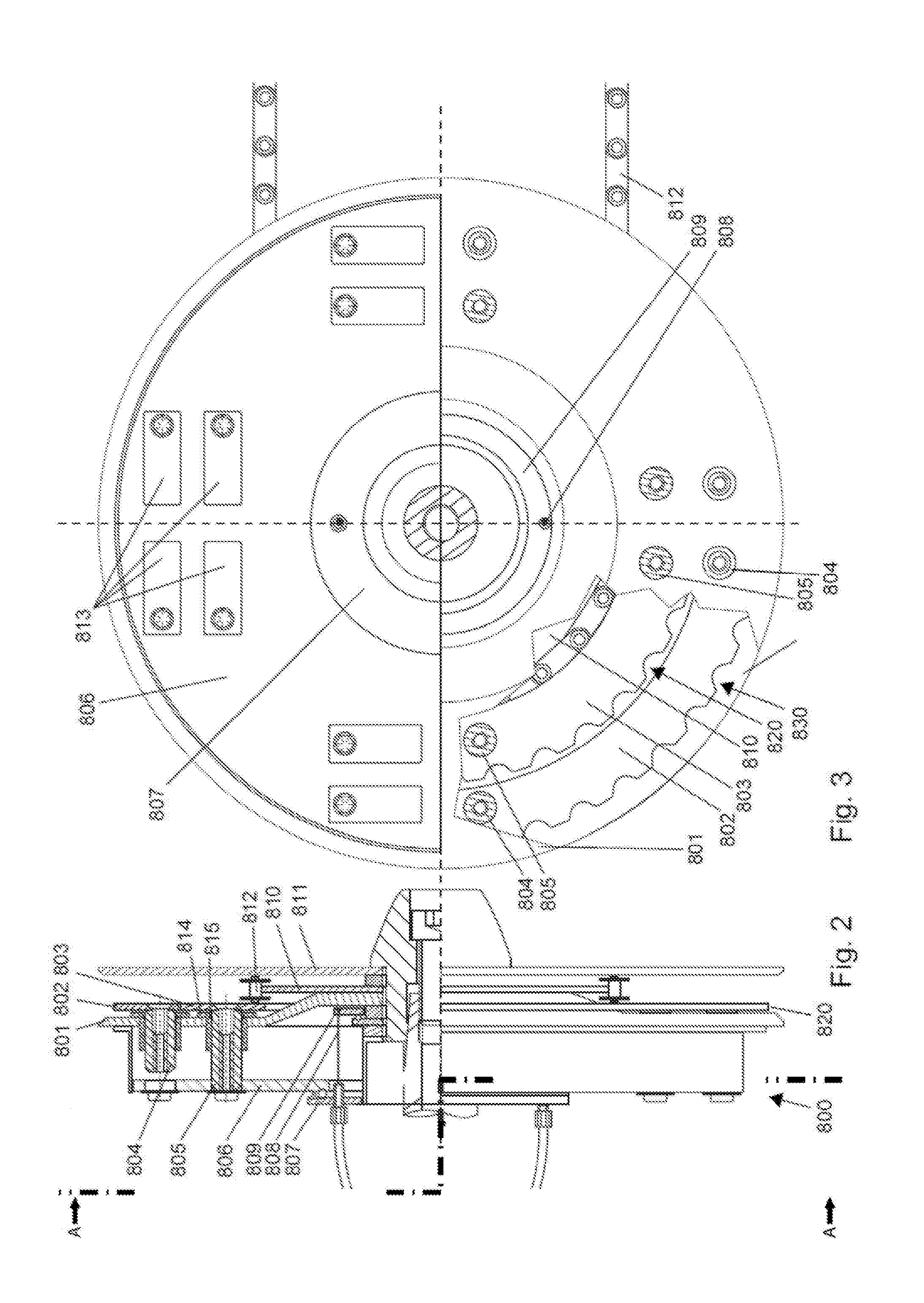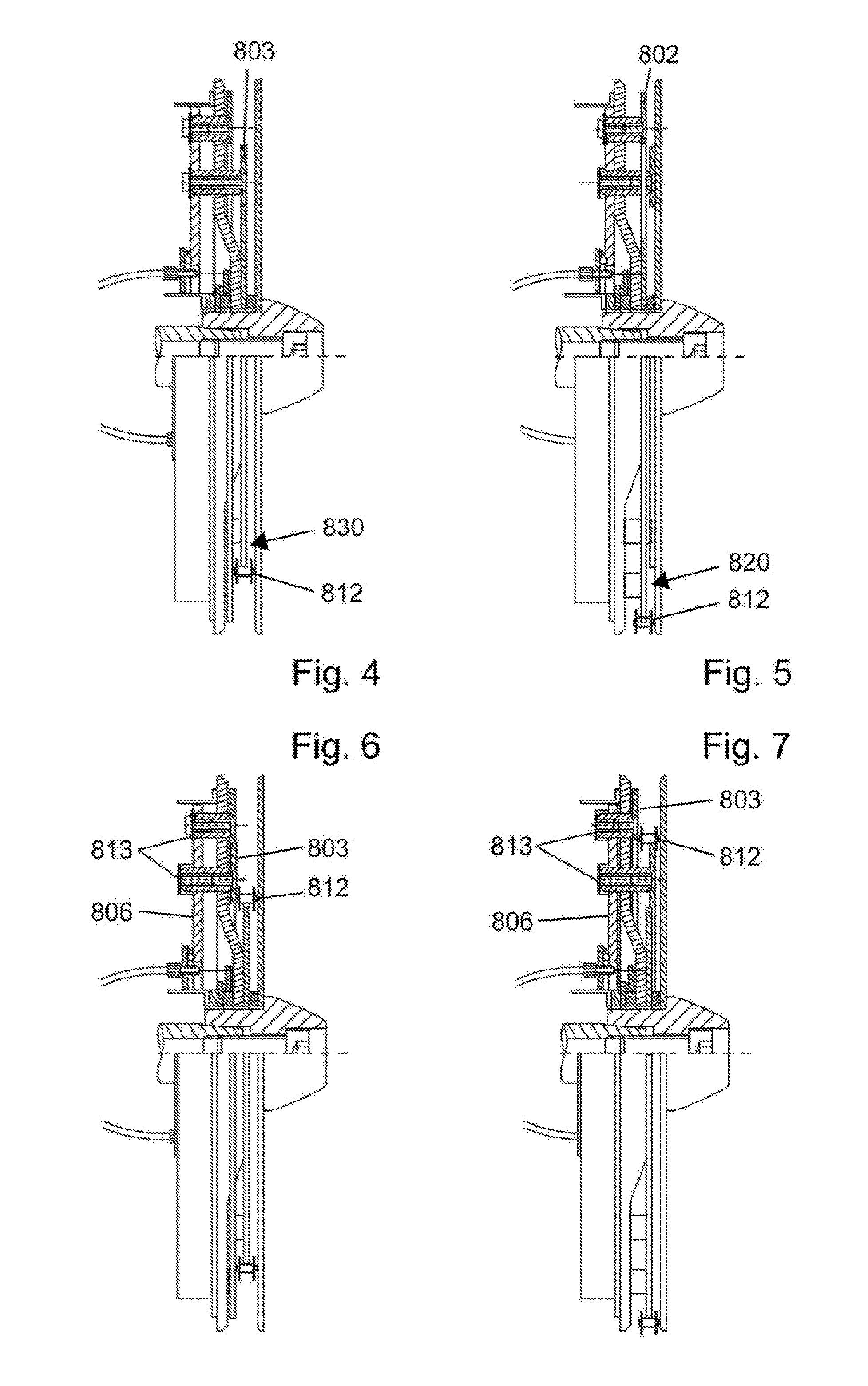Mechanism for transmitting a rotary movement with variable transmission ratio
a transmission ratio and rotary movement technology, applied in mechanical equipment, transportation and packaging, gearings, etc., can solve the problems of material fatigue, high chain friction, and high load on the chain, and achieve the effect of preventing any undesired rotary movemen
- Summary
- Abstract
- Description
- Claims
- Application Information
AI Technical Summary
Benefits of technology
Problems solved by technology
Method used
Image
Examples
Embodiment Construction
[0072]A first aspect of the invention avoids contact, as far as possible, between stationary and rotating units in that the mechanism effecting the displacement of the sectored, divided or interrupted sprockets is in constant engagement with the rotating unit in a rotationally decoupled manner. According to the invention, this rotationally decoupled control mechanism is made possible in that the stationary part of the mechanism is configured to be rotationally decoupled relative to the rotating part by double mounting. This type of operation overcomes the drawback of known solutions comprising the repeatedly occurring contact between rotating parts and the relatively stationary part.
[0073]In the following, this will be demonstrated by way of an example, which is illustrated in FIGS. 2 to 7 and constitutes an embodiment of a simplified gearing according to the invention comprising three gears and the associated control mechanism 800.
[0074]FIG. 2 is a front view of the gearing, i.e. v...
PUM
 Login to View More
Login to View More Abstract
Description
Claims
Application Information
 Login to View More
Login to View More - R&D
- Intellectual Property
- Life Sciences
- Materials
- Tech Scout
- Unparalleled Data Quality
- Higher Quality Content
- 60% Fewer Hallucinations
Browse by: Latest US Patents, China's latest patents, Technical Efficacy Thesaurus, Application Domain, Technology Topic, Popular Technical Reports.
© 2025 PatSnap. All rights reserved.Legal|Privacy policy|Modern Slavery Act Transparency Statement|Sitemap|About US| Contact US: help@patsnap.com



